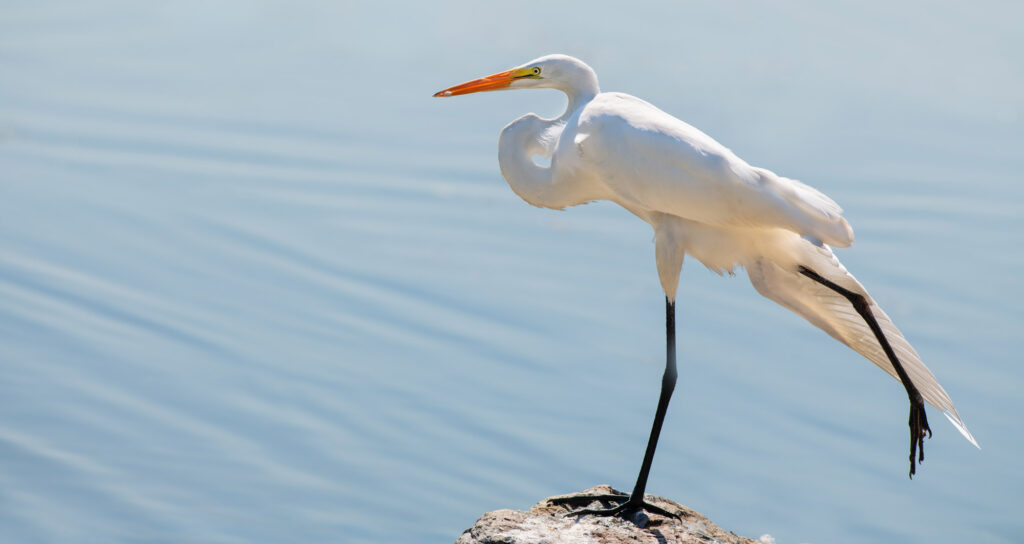GREAT EGRET, RANGE, FACTS, SOUND, MEANING, DIET, MIGRATION, IMAGES, VIDEOS, BIRDS, FLYING, WHITE HERON
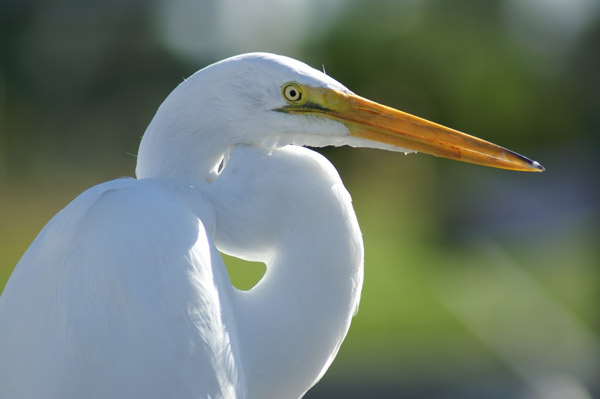
To begin with, the Great Egret (scientific name: Ardea alba) is a large, long-legged bird species commonly found in wetlands, marshes, and near bodies of water throughout the world.
PHYSICAL CHARACTERISTICS
Standing about three feet tall, with a wingspan of up to five feet, the Great Egret is a stunning bird with striking white feathers and a long, slender neck.
DIET
One of the defining features of the Great Egret is its long, sharp bill, which it uses to hunt for fish, frogs, and other small prey. With its sharp eyesight, it can quickly spot movement in the water and plunge its bill in to capture its next meal.
Also, the Great Egret is also known for its distinctive hunting technique, which involves standing still in shallow water and waiting for prey to come within striking distance.
COLORS
Another distinctive feature of the Great Egret is its brilliant white plumage. This makes the bird highly visible to both predators and prey, which can be both an advantage and a disadvantage.
In fact, the white feathers are also used for courtship displays, where the bird will stretch its neck and wings in a show of strength and beauty.
HUNTED BIRD
Despite its beauty, the Great Egret was once hunted almost to extinction for its feathers, which were used to adorn women’s hats.
Conservation efforts in the late 19th and early 20th centuries helped save the species. As of today, the Great Egret is considered a common sight in many parts of the world.
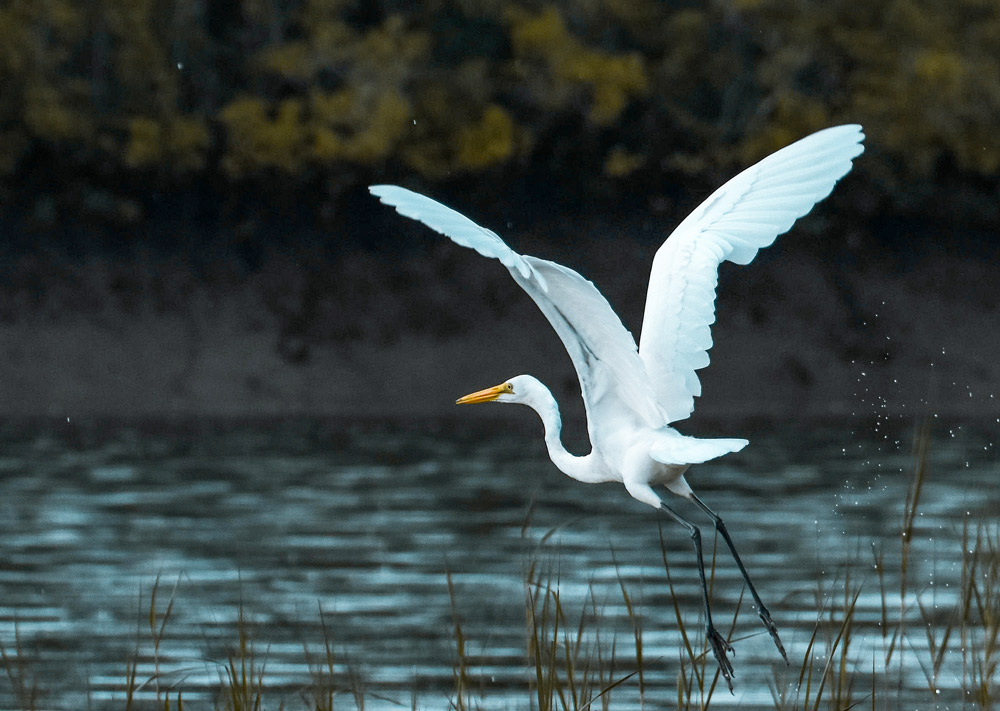
VULNERABLE
Even if it has a widespread distribution, the Great Egret remains vulnerable to habitat loss, as wetlands and marshes are drained and developed for human use.
Climate change also poses a threat, as rising temperatures and changes in precipitation patterns can alter the bird’s habitat and food supply.
CULTURAL SIGNIFICANCE
Besides its role in the ecosystem, the Great Egret also holds cultural significance in many cultures. In ancient Egyptian mythology, the bird was seen as a symbol of purity and grace and was often depicted in art and hieroglyphs.
For the Native Americans, the Great Egret was seen as a symbol of balance and harmony and was often incorporated into traditional clothing and jewelry.
POPULAR BIRD
It is also a popular bird for birdwatchers and nature enthusiasts. With its large size, distinctive appearance, and frequent presence in wetlands and marshes, it is a relatively easy bird to spot and observe. Many birdwatching tours and events are organized specifically to view Great Egrets and other bird species in their natural habitats.
HOW TO PROTECT THEM?
Regardless of its popularity and cultural significance, the Great Egret is still at risk from habitat loss and other threats. To safeguard this magnificent bird species, it is important for individuals, communities, and governments to take steps to conserve wetlands and marshes and reduce human activity’s impact on these vital habitats.
Hence, this can include measures such as protecting wetlands and marshes from development, controlling pollution, and reducing the use of pesticides and other harmful chemicals.
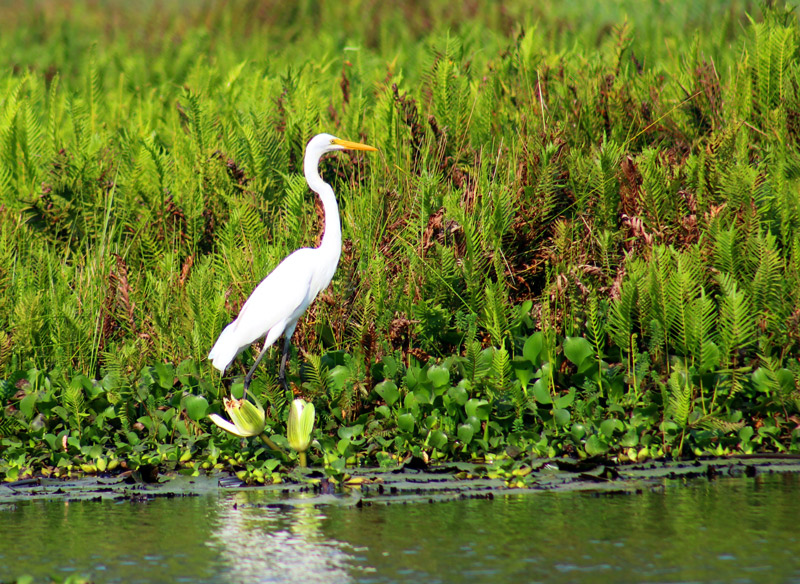
MIGRATION
The White Egret is also a migratory bird species, meaning that it travels long distances between its breeding and wintering grounds. During the breeding season, Great Egrets can be found in North America, Europe, and Asia, where they build nests in trees or on the ground near bodies of water. In the winter months, they migrate to warmer regions, such as South America and Africa.
This migration helps the Great Egret to avoid harsh weather conditions and to access food and water sources. It also helps to promote genetic diversity within the species, as birds from different populations come into contact and interbreed.
CHALLENGES
However, migration also poses challenges for the Great Egret, as it must navigate long distances, cross the unfamiliar territory, and find food and water along the way. The construction of buildings, roads, and other human structures can also obstruct migration routes and make it more difficult for the birds to reach their destination.
PRESERVATION
Indeed, it is important to preserve stopover sites and migration corridors, such as wetlands and marshes, where the birds can rest and refuel during their journey.
Additionally, efforts must be made to reduce the impact of human activities, such as light pollution and habitat destruction, on these critical areas.
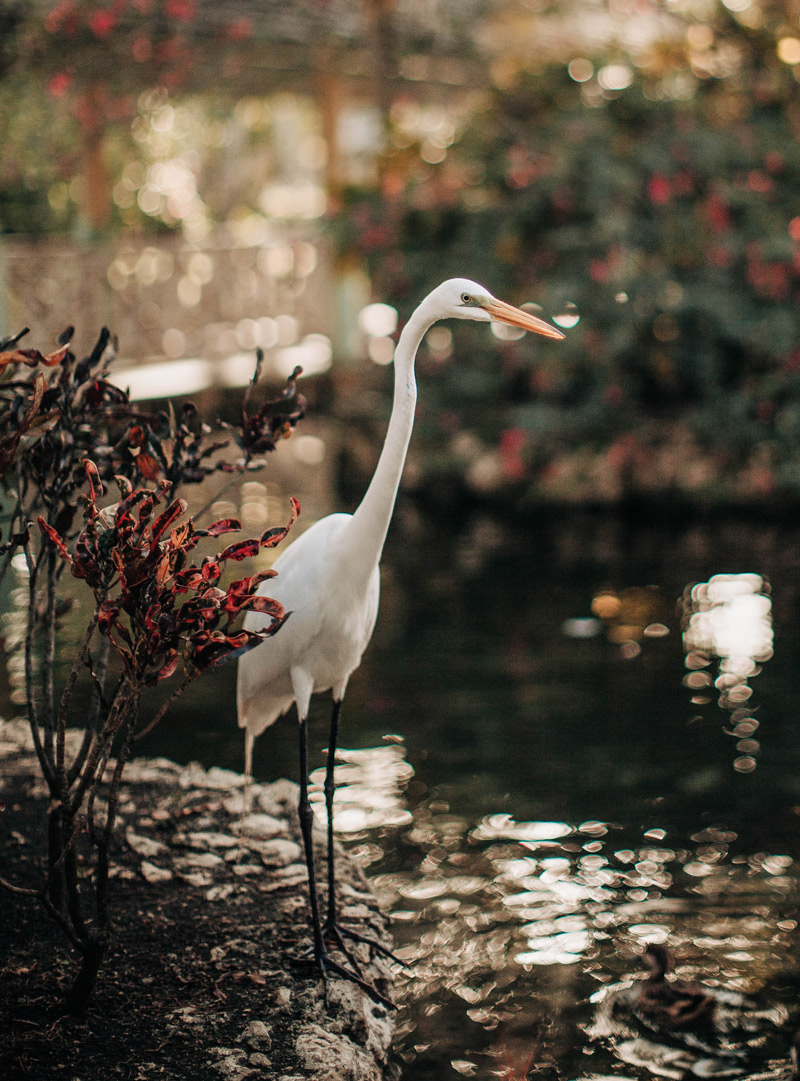
EDUCATION
Another important element of Great Egret conservation is education and outreach. In fact, raising awareness about the importance of this species and the threats it faces can help to mobilize support and action for conservation efforts.
For example, educational programs and presentations can help to increase public understanding of the Great Egret and its role in the ecosystem.
FIELD TRIPS
Furthermore, field trips and nature walks can provide hands-on learning opportunities, allowing people to observe the bird in its natural habitat and learn about its behavior and ecology.
ENGAGING THE PUBLIC
Yet, citizen science programs can engage the public in monitoring and reporting Great Egret populations and habitat quality, providing valuable data for conservation efforts. Involving individuals and communities in conservation efforts can increase support for Great Egret protection and enhance our understanding of this magnificent bird species.
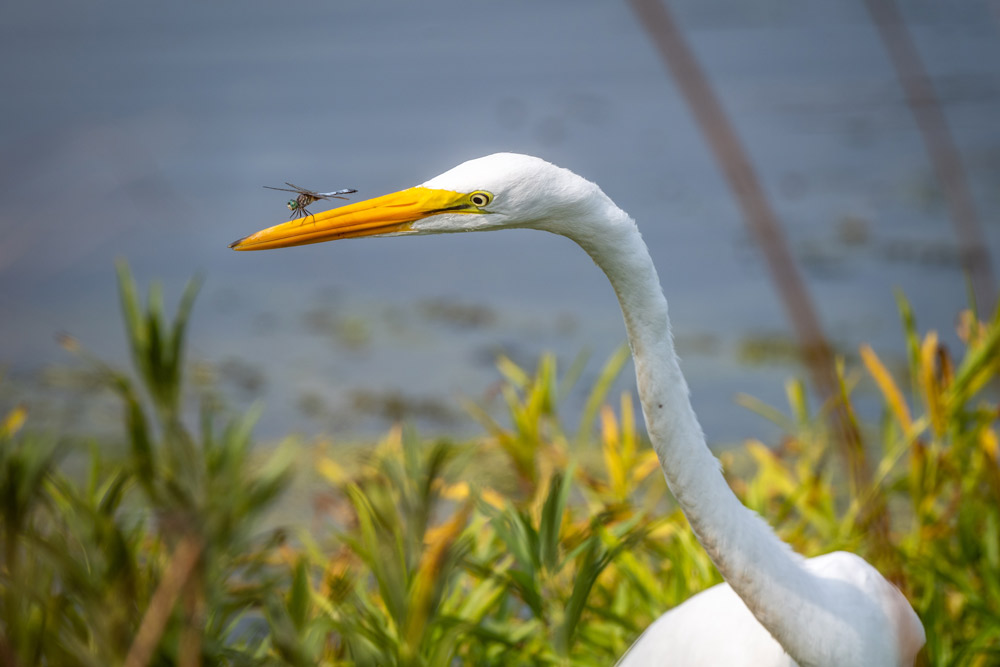
ECONOMIC ASPECT
Moreover, promoting sustainable tourism and ecotourism activities can help to generate income for local communities and support conservation efforts. For instance, birdwatching tours and nature reserves that focus on Great Egret conservation can provide economic benefits while educating visitors about this species’ importance and the need for conservation.
PLASTIC POLLUTION
One other challenge facing the Great Egret is the issue of plastic pollution. Plastic waste is a major threat to wildlife, as it can harm or kill animals that ingest or become entangled in it. For the Great Egret, which feeds in wetlands and marshes, plastic pollution can pose a significant threat to its health and survival.
A few examples are plastic debris such as fishing lines, bags, and packaging can entangle the birds, causing injury or death. To add more, the Great Egret and other waterbirds can ingest plastic particles, mistaking them for food. This can lead to digestive blockages, nutrient deficiencies, and death.
REDUCING PLASTIC WASTE
To protect them and other wildlife from the effects of plastic pollution, it is important to reduce plastic waste and promote sustainability. It can include measures such as reducing single-use plastics, promoting recycling, and cleaning up litter from beaches and wetlands.
Individual actions, such as reducing personal plastic use and participating in beach cleanups, can also make a big difference. By working together to reduce plastic pollution, we can help to protect the Great Egret and other wildlife from harm and ensure a healthy and sustainable future for our planet.
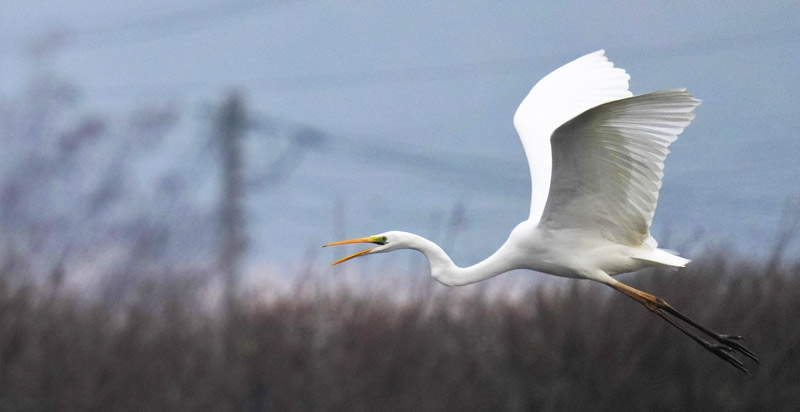
HABITAT LOSS
Another issue affecting the Great Egret is habitat loss and degradation. As human populations grow and urban areas expand, natural habitats such as wetlands, marshes, and forests are being destroyed or altered, making it more difficult for the Great Egret and other wildlife to find food and shelter.
For this bird, habitat loss and degradation can also reduce breeding and feeding opportunities, making it more difficult for the species to survive and reproduce. Therefore, wetlands and marsh habitats are often drained for agriculture or urban development, reducing the birds’ availability of food and water.
PROMOTING CONSERVATION
To preserve the Great Egret and its habitat, it is important to promote conservation and sustainable development. There are a few measures such as protecting wetlands and marshes through the creation of wildlife reserves, preserving forests and other habitats, and promoting sustainable agriculture and urban development.
Thereby, efforts must be made to restore degraded habitats, such as through reforestation, wetland restoration, and erosion control. This can help to increase the availability of food and shelter for the Great Egret and other wildlife and support the long-term survival and well-being of these species.
In conclusion, habitat loss and degradation are major challenges facing the Great Egret and other wildlife. Protecting this magnificent bird species is important to promote conservation and sustainable development and restore degraded habitats. By working together, we can help to ensure the survival and well-being of the Great Egret for generations to come.
WANT TO LEARN MORE? TAKE A LOOK AT THESE ARTICLES:
- The Scarlet Macaw
- The Scarlet Ibis
- Lovebirds
- The Female Cardinal
- The Great Egret
- The Great Blue Heron
- The American Robin
- The Northern Cardinal
- The Dark-Eyed Junco
- The Blue Jay
- The Gray Catbird
- The Tufted Titmouse
- The Red-winged Blackbird
- The Black-capped Chickadee
- The Evening Grosbeak
- The Common Starling
- The Kiwi Bird
- Wild Birds Unlimited

